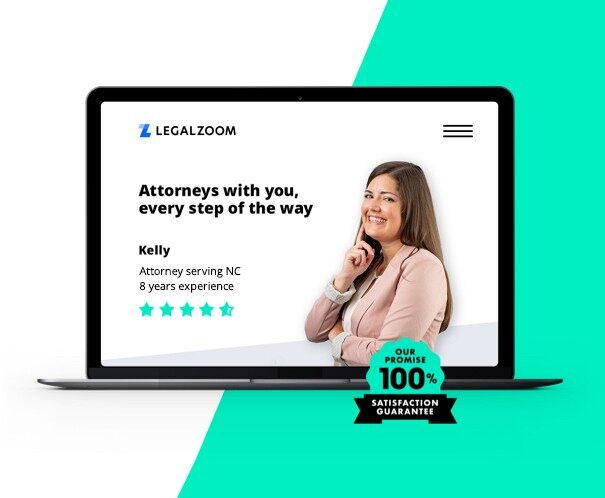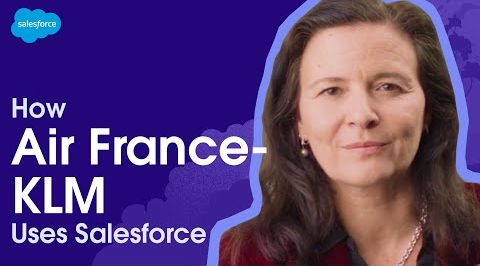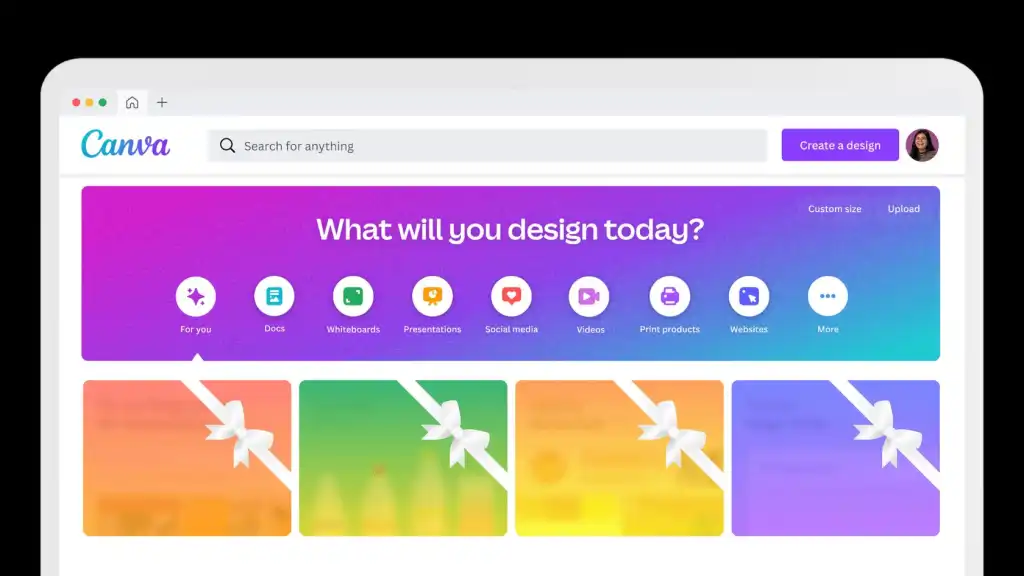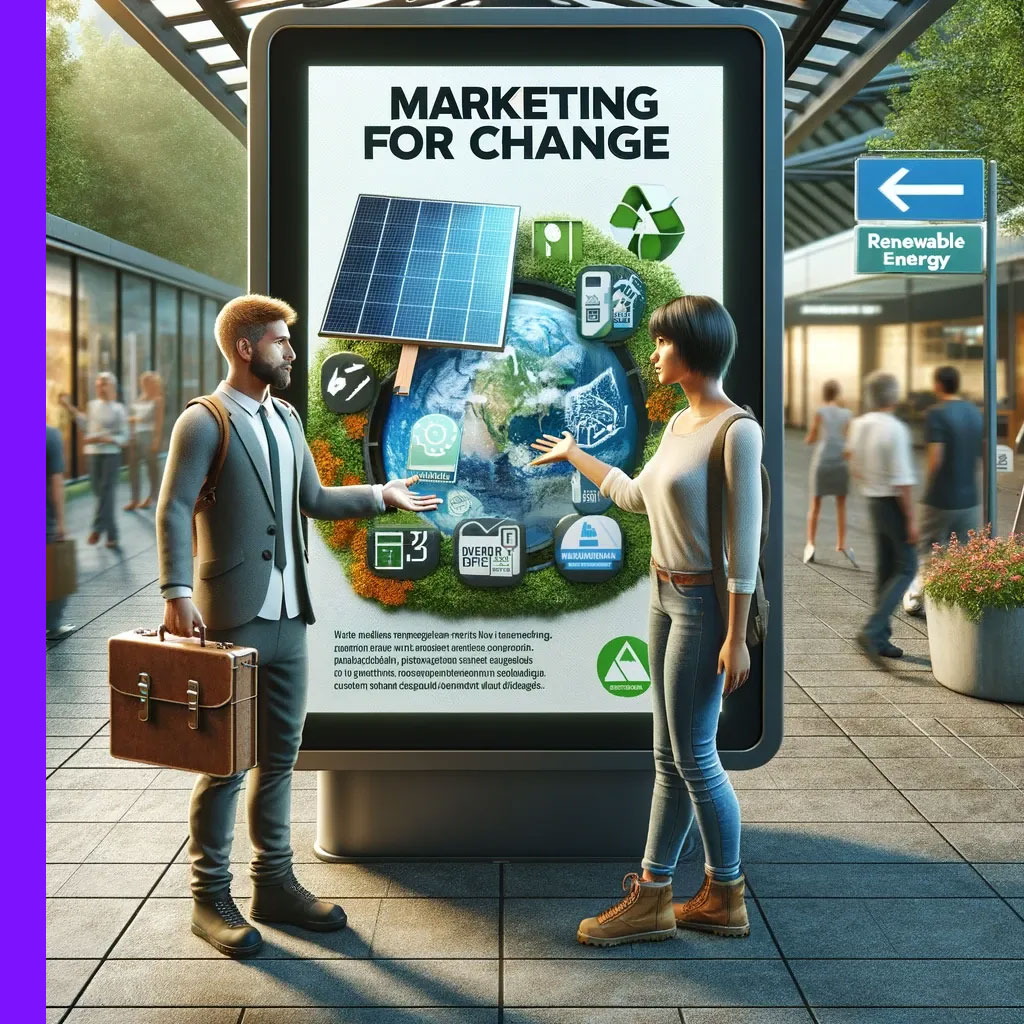Industry-Specific Marketing
Feb 15, 2024
By Ari Manor , CEO at ZOOZ

This is one in a series of articles that provide detailed and updated information about Marketing. In this specific article, which focuses on Industry-Specific Marketing, you can read about:
- Product Marketing
- Service Marketing
- Business Marketing
- Small Business Marketing
- Startup Marketing
- Art Marketing
- Restaurant Marketing
- Hospitality and Tourism Marketing
- Marketing for Change
- Marketing for Nonprofits
For additional articles about Marketing, see the Topic Menu.

Product Marketing
Product marketing is a crucial function that bridges the gap between product development and market demand, focusing on promoting and selling a product to customers. It encompasses understanding the target market, positioning the product effectively, and crafting messaging that resonates with potential buyers.
Here's a strategic approach to product marketing:
- Market Research: Conduct comprehensive research to understand the market landscape, including competitor analysis, customer needs, and market trends.
- Target Audience Definition: Identify and segment your target audience based on demographics, psychographics, and buying behavior to tailor your marketing strategies effectively.
- Product Positioning: Develop a clear positioning statement that differentiates your product in the market, highlighting its unique value proposition and benefits to the target audience.
 Case Study: Dyson's Innovation Showcase
Case Study: Dyson's Innovation Showcase- Company: yson, Worldwide (ongoing)
- What Was Done: Dyson marketed its products by emphasizing innovation and superior performance through detailed demonstrations and comparisons. Marketing efforts included high-quality video content on social media and in-store experiences that allowed customers to see the technology in action.
- Results/Impact: Dyson's focus on product superiority and innovation led to a dominant position in the vacuum cleaner market and expansion into other product categories. Their marketing approach helped justify premium pricing, with significant sales growth reported annually.
- Messaging Strategy: Create compelling messaging that communicates the product's value and benefits clearly and persuasively to your target audience.
- Go-to-Market Strategy: Plan and execute a go-to-market strategy that outlines how to introduce the product to the market, including timing, channels, and key marketing activities.
- Content Marketing: Develop and distribute valuable content (e.g., blog posts, case studies, videos) that supports the product's value proposition and addresses customer pain points.
 Case Study: GoPro's Adventure-Driven Content
Case Study: GoPro's Adventure-Driven Content- Company: GoPro, Worldwide (ongoing)
- What Was Done: GoPro excelled in product marketing by encouraging users to share their adventure videos shot on GoPro cameras. The brand utilized user-generated content across social media platforms, complemented by influencer partnerships and breathtaking promotional videos showcasing the durability and quality of their cameras.
- Results/Impact: This strategy significantly enhanced GoPro's brand visibility and sales, with a notable increase in market share within the action camera segment. User-generated content not only demonstrated the product's capabilities but also fostered a strong community of brand advocates.
- Sales Enablement: Equip your sales team with the necessary tools, resources, and training to sell the product effectively, including sales scripts, FAQs, and product demos.
- Digital Marketing: Utilize digital channels such as email marketing, social media, and SEO to promote the product and engage with potential customers.
- Customer Feedback: Gather and analyze customer feedback post-launch to identify areas for improvement and inform future product enhancements.
- Performance Measurement: Use key performance indicators (KPIs) to measure the success of your product marketing efforts, including sales data, website traffic, and customer engagement metrics.
- Cross-functional Collaboration: Work closely with product development, sales, and customer service teams to ensure a cohesive approach to product marketing and address any challenges promptly.
Effective product marketing requires a deep understanding of both the product and the target market, ensuring that marketing efforts are aligned with customer needs and market opportunities. By following these strategies, businesses can successfully launch and promote their products, driving demand and achieving sales objectives.

Service Marketing
Service marketing involves promoting and selling intangible offerings that can benefit the consumer without providing a physical product. Unlike product marketing, service marketing focuses on the unique challenges of marketing something that cannot be seen, touched, or stored.
Key strategies for effective service marketing include:
- Understanding Customer Needs: Conduct deep market research to grasp the specific needs, preferences, and pain points of your target audience.
 Case Study:
Case Study:
LegalZoom's Legal Service Simplification- Company: LegalZoom, USA (ongoing)
- What Was Done: LegalZoom marketed its legal services by simplifying the process of obtaining legal assistance and making it accessible online. Their marketing efforts focused on the ease of use, affordability, and reliability of their services, targeting individuals and small businesses through digital advertising and content marketing.
- Results/Impact: LegalZoom saw a significant uptick in customers seeking legal services, with millions of users utilizing their platform for everything from creating wills to forming businesses. Their approach democratized legal services and showcased the effectiveness of marketing complex services in an accessible manner.
- Service Differentiation: Clearly define what makes your service unique compared to competitors. Highlighting the unique benefits, expertise, and value your service provides is crucial.
- Building Trust: Since services are intangible, building trust through customer testimonials, case studies, and showcasing industry expertise is vital.
- Emphasizing Service Quality: Promote the high quality of your service, reliability, and customer satisfaction to reassure potential customers of the value you offer.
- Personalization: Tailor your service offerings to meet individual customer needs, enhancing customer satisfaction and loyalty.
- Creating a Strong Brand: Develop a strong brand identity that reflects the essence of your service, making it recognizable and memorable. This becomes the visual representation of your intangible offerings.
- Leveraging Digital Marketing: Utilize digital marketing channels such as social media, email marketing, and content marketing to engage with potential customers and keep them informed about your services.
- Customer Experience: Focus on delivering an exceptional customer experience, from the first point of contact through post-service follow-up, to encourage repeat business and referrals.
- Feedback and Continuous Improvement: Actively seek customer feedback and use it to continuously improve your service offerings and customer experience.
- Engaging Visuals and Stories: Use engaging visuals, storytelling, and real-life examples to illustrate your service's impact, making the intangible tangible.
 Case Study:
Case Study:
Salesforce's Customer Success Stories- Company: Salesforce, Worldwide (ongoing)
- What Was Done: Salesforce's service marketing strategy heavily featured customer success stories and case studies to illustrate the impact of their CRM solutions. These narratives were shared through various channels, including their website, social media, and at Salesforce events, to demonstrate tangible benefits to potential clients.
- Results/Impact: This strategy reinforced Salesforce's position as a leader in the CRM space, contributing to sustained revenue growth and customer acquisition. By showcasing real-world success, Salesforce effectively communicated the value of its services.
- Service Guarantees: Offer guarantees or warranties to reduce the perceived risk of choosing your service, making it easier for customers to commit.
- Partnerships and Networking: Build partnerships with other businesses to expand your service reach and leverage networking opportunities for referrals.
- Training and Development: Ensure your team is well-trained and knowledgeable about your services to maintain high service standards and customer satisfaction.
Service marketing requires a focus on the intangible aspects of customer service, such as customer care, personalization, and building long-term relationships. By emphasizing these elements, businesses can effectively market their services, differentiate themselves from the competition, and build a loyal customer base.

Business Marketing
The term "Business Marketing" typically refers to B2B (Business-to-Business) marketing (See: here). However, "Business Marketing" also extends to encompass marketing efforts designed to promote businesses broadly. This aspect of marketing focuses on aiding businesses in sales, growth, and market presence enhancement through strategies crafted to elevate a company's profile, attract customers, and increase revenues. Such a comprehensive approach aims to enhance a business's attractiveness to its target audience, applicable across both B2B and B2C (Business-to-Consumer) sectors.
Here's an effective approach to marketing businesses for growth:
- Brand Development: Establish a strong, coherent brand identity that resonates with your target audience, including logo, messaging, and values that differentiate your business in the market.
- Online Presence: Build and maintain a robust online presence through an optimized website, social media engagement, and content marketing to attract and retain customers.
- SEO Strategies: Implement search engine optimization tactics to enhance your visibility online, making it easier for potential customers to find you.
- Content Marketing: Create valuable content that addresses the needs and interests of your audience, establishing your business as a thought leader in your industry.
- Social Media Marketing: Utilize social media platforms to connect with your audience, share insights, and promote your products or services.
- Email Campaigns: Develop targeted email marketing campaigns to nurture leads, offer exclusive promotions, and communicate with your audience.
- Customer Experience: Focus on delivering an exceptional customer experience, from the first interaction to post-purchase support, to fostering loyalty and positive word-of-mouth.
- Market Research: Conduct continuous market research to stay ahead of industry trends, understand customer behavior, and adapt your strategies accordingly.
- Networking and Partnerships: Leverage networking opportunities and form strategic partnerships to expand your reach and access new customer segments.
 Case Study:
Case Study:
Mailchimp's "More Than Mail" Campaign- Company: Mailchimp, Worldwide (2019)
- What Was Done: Mailchimp expanded its services beyond email marketing and launched the “More Than Mail” campaign to reposition itself as an all-in-one marketing platform for businesses. The campaign utilized a mix of digital marketing, content marketing, and partnership initiatives to educate existing and potential customers about its expanded suite of tools.
- Results/Impact: The campaign successfully broadened Mailchimp’s user base and deepened engagement with existing customers, leading to an increase in the adoption of additional services offered by Mailchimp. The company saw a significant uptick in user engagement metrics and an expansion in market share within the small business marketing space.
- Advertising: Consider targeted advertising campaigns, both online (PPC, display ads) and offline (print, outdoor), to increase brand awareness and drive sales.
 Case Study: Slack's "Work Happens" Campaign
Case Study: Slack's "Work Happens" Campaign- Company: Slack, Worldwide (2016)
- What Was Done: Slack launched the "Where Work Happens" campaign to market its communication platform directly to businesses. The campaign highlighted how Slack improves team communication and collaboration through customer testimonials, case studies, and targeted ads on business-related platforms and social media.
- Results/Impact: This campaign significantly increased Slack's adoption among businesses, contributing to a rapid user base growth and establishing Slack as a fundamental tool for workplace communication. By the end of 2016, Slack reported a doubling of its daily active users, illustrating the impact of effective business-to-business marketing strategies.
- Analytics and Feedback: Use analytics tools to track the effectiveness of your marketing efforts and gather customer feedback to continually refine your approach.
- Innovative Solutions: Stay open to innovation, whether through new technologies, services, products, or customer engagement strategies, to keep your business relevant and competitive.
- Community Engagement: Engage with your local or online community through events, sponsorships, and collaborations to build goodwill and brand recognition.
Marketing for businesses requires a multi-faceted approach, blending traditional and digital strategies to effectively reach and engage target audiences. Tailoring these strategies to align with the business's goals, customer preferences, and market dynamics is key to driving growth and achieving long-term success.

Small Business Marketing
Small business marketing is essential for growth, brand visibility, and customer engagement in a competitive landscape. Unlike larger corporations, small businesses often operate with limited budgets and resources, making it crucial to employ strategic, cost-effective marketing techniques.
Here's a practical approach to marketing for small businesses aimed at maximizing impact:
- Understand Your Audience: Start by clearly defining your target market. Use customer interactions, surveys, and community feedback to gain insights into their preferences and needs.
- Craft a Compelling Value Proposition: Highlight what makes your business unique. Focus on the benefits your products or services offer to address specific customer pain points.
 Case Study: Canva's Empowerment of Small Businesses
Case Study: Canva's Empowerment of Small Businesses- Company: Canva, Worldwide, (ongoing)
- What Was Done: Canva targeted small businesses with its easy-to-use design platform, offering templates and tools specifically tailored to their marketing needs. The company utilized content marketing, free educational webinars, and targeted social media ads to reach and educate small business owners on creating effective marketing materials.
- Results/Impact: Canva's approach led to widespread adoption among small businesses, with many utilizing the platform for their branding, social media, and other marketing efforts. Canva reported a significant increase in active users and subscription rates among small businesses, underscoring the demand for accessible marketing tools in this segment.
- Leverage Local SEO: Optimize your online presence for local searches. Claim your Google My Business listing, ensure your business is listed in local directories, and use location-based keywords on your website.
- Engage in Social Media: Choose social media platforms where your target audience is most active. Regularly post engaging content, interact with followers, and use social media for customer service.
- Utilize Content Marketing: Create valuable content (blogs, how-to guides, infographics) that addresses your customers' questions and interests. This boosts your website's SEO and establishes your business as an industry authority.
- Email Marketing: Build an email list and engage your audience with newsletters, exclusive offers, and personalized content. Email marketing remains one of the most cost-effective ways to nurture leads and retain customers.
- Network and Build Partnerships: Participate in community events, join local business associations, and collaborate with non-competing businesses to widen your reach.
- Encourage Word-of-Mouth: Deliver exceptional customer service to inspire referrals. Consider implementing a referral program to incentivize word-of-mouth marketing.
- Utilize Online Advertising Wisely: Explore targeted advertising options within your budget. Platforms like Google Ads and Facebook Ads offer flexible budgeting and targeting capabilities.
 Case Study: Square's Local Business Focus
Case Study: Square's Local Business Focus- Company: Square, USA (ongoing)
- What Was Done: Square offered payment processing solutions tailored to the needs of small and local businesses, complemented by marketing resources to help them grow. Marketing efforts included localized advertising campaigns, small business workshops, and success story features that highlighted the benefits of using Square's ecosystem.
- Results/Impact: Square's focused marketing and service offerings led to a substantial increase in adoption by small businesses, contributing to the company's growth and a notable expansion in its customer base. Square's support of small businesses through targeted marketing strategies reinforced its commitment to this segment and enhanced its brand reputation.
- Monitor and Adapt: Use analytics tools (via outsourced guidance if needed) to track the effectiveness of your marketing efforts. Adjust your strategies based on performance data and changing market conditions.
- Customer Feedback: Actively seek and respond to customer feedback. Use insights gained to improve your products, services, and customer experience.
Small business marketing requires a focus on strategies that offer high ROI and the ability to directly connect with and understand your customer base. By employing a mix of digital and traditional marketing tactics tailored to your unique business needs and audience, small businesses can achieve significant growth and build a loyal customer community.

Startup Marketing
Startup marketing is a critical component in establishing and growing a new business. It requires a strategic, resourceful approach to connect with the target audience, build brand awareness, and drive user acquisition with typically limited resources.
Here’s how startups can navigate the complex landscape of marketing effectively:
- Identify Your Target Market: Understanding who your ideal customers are is foundational. Conduct market research to define your target audience’s demographics, needs, and behaviors.
- Develop a Unique Value Proposition (UVP): Clearly articulate what sets your product or service apart from competitors. Your UVP should address the specific benefits your startup offers to its target audience.
 Case Study:
Case Study:
Robinhood's Commission-Free Trading Appeal- Company: Robinhood, USA (2015)
- What Was Done: Robinhood marketed its stock trading app to a younger demographic unfamiliar with the stock market by emphasizing its commission-free trading and user-friendly interface. The startup utilized social media campaigns and influencer partnerships to spread awareness and drive signups.
- Results/Impact: This approach attracted millions of users, significantly disrupting the brokerage industry and prompting traditional firms to eliminate commission fees as well. Robinhood’s user base grew exponentially, demonstrating the effectiveness of aligning product offerings with innovative marketing strategies to capture a new market segment.
- Leverage Lean Marketing Tactics: Focus on strategies that require minimal expenditure but can yield significant returns. This includes content marketing, SEO, and utilizing social media platforms to engage with your audience.
- Content Marketing: Create valuable, relevant content that addresses your audience's problems and positions your brand as a thought leader. Blogs, videos, and podcasts are cost-effective ways to attract and retain customers.
- Social Media Presence: Build a strong presence on platforms where your target audience spends their time. Use these channels to share content, interact with followers, and promote your brand.
- Email Marketing: Collect email addresses from the start and use email marketing to nurture leads, announce product launches or updates, and keep your audience engaged.
- Network and Partnership Building: Collaborate with other startups, attend industry events, and engage in community-building activities. Partnerships can extend your marketing reach and provide mutual benefits.
- Customer Feedback: Use early customer feedback to refine your product and marketing strategies. Positive testimonials and case studies can be powerful tools in convincing others to try your product.
- Analytics and Adaptation: Utilize analytics tools to track the performance of your marketing efforts. Be prepared to pivot and adapt strategies based on what the data reveals about what's working and what isn’t.
- Influencer Collaborations: Partner with influencers who resonate with your brand to tap into their audience and gain credibility.
- Referral Programs: Encourage word-of-mouth marketing by offering incentives for referrals. This can be a highly effective and cost-efficient way to acquire new customers.
 Case Study: Dropbox's Referral Program
Case Study: Dropbox's Referral Program- Company: Dropbox, Worldwide (2008)
- What Was Done: To overcome the challenge of gaining a user base as a startup, Dropbox implemented a referral program that rewarded both the referrer and the referee with additional storage space. This program was marketed through their platform and social media, capitalizing on the existing users' networks.
- Results/Impact: Dropbox's referral program led to a permanent 60% increase in signups, with a significant portion of its growth attributable to this strategy. It's a prime example of how startups can use innovative marketing techniques to accelerate growth and user acquisition with limited budgets.
- Road show: Startups, particularly in their early stages, frequently seek funding and thus dedicate significant marketing efforts to prepare materials for investors (such as one-pagers, decks, and business plans) and pitch to secure financing.
Startup marketing is about making the most of limited resources to achieve growth. It requires creativity, agility, and a focus on strategies that directly contribute to building a strong brand and customer base. By continuously testing, learning, and iterating, startups can find the mix of marketing activities that best suit their unique business model and customer needs.

Art Marketing
Art marketing is a strategic approach that artists use to promote their work, connect with audiences, and sell their creations. It encompasses a blend of traditional and digital techniques tailored to highlight the unique value and story behind each piece of art. Effective art marketing not only increases visibility but also establishes a strong brand presence for the artist.
Here's a comprehensive guide to marketing art effectively:
- Build a Professional Online Portfolio: Create a visually appealing website to showcase your art, share your artist statement, and provide purchasing information. Ensure it is user-friendly and mobile-responsive.
- Leverage Social Media: Utilize platforms like Instagram, Pinterest, and Facebook to share your artwork, process, and behind-the-scenes glimpses. Engage with your followers by responding to comments and messages.
- Email Marketing: Collect email addresses at exhibitions, through your website, and social media to build a mailing list. Send regular newsletters with updates on new works, upcoming shows, and exclusive offers.
- Network and Collaborate: Attend art fairs, gallery openings, and other industry events to network with peers and potential buyers. Collaborate with other artists or brands on projects to reach new audiences.
- Utilize SEO: Optimize your website content with relevant keywords to improve your search engine ranking, making it easier for potential buyers to find you online.
- Offer Limited Edition Prints: Selling limited edition prints can make your art accessible to a broader audience and provide an additional revenue stream.
- Engage in Content Marketing: Start a blog or create videos to share your inspiration, techniques, and stories behind your artworks. This can deepen your audience's connection to your work.
- Press and Publicity: Reach out to art journalists, bloggers, and local media to feature your work. Getting published enhances credibility and expands your reach.
- Online Marketplaces and Galleries: List your work on online art marketplaces and galleries to tap into their established audiences of art collectors and enthusiasts.
 Case Study: Saatchi Art's Online Gallery Platform
Case Study: Saatchi Art's Online Gallery Platform- Company: Saatchi Art, Worldwide (ongoing)
- What Was Done: Saatchi Art created an online marketplace and gallery for artists to sell their work, directly targeting art collectors and enthusiasts. The platform marketed itself through strategic digital advertising, SEO, and partnerships with art influencers and bloggers. They also utilized virtual reality exhibitions and online art fairs to engage potential buyers and provide artists with global exposure.
- Results/Impact: Saatchi Art's innovative use of digital marketing strategies and technology significantly increased its visibility and sales. The platform hosts work from over 100,000 artists, with thousands of pieces sold each month. Their approach demonstrates the effectiveness of leveraging online channels and emerging technologies in the art market, connecting artists with buyers worldwide.
- Offer Commissions: Promote your availability for commissioned work, allowing customers to own a piece of art that is uniquely personal and tailored to their preferences.
- Participate in Community Projects: Engage with your local community through art projects or workshops. This can increase your visibility and showcase your commitment to enriching your community through art.
- Invest in Quality Photography: High-quality images are crucial for marketing your art. Invest in professional photography to ensure your work is presented in the best light online and in promotional materials.
 Case Study: Art Basel's Digital Expansion
Case Study: Art Basel's Digital Expansion
- Company: Art Basel, Global Events (2020)
- What Was Done: In response to the COVID-19 pandemic, Art Basel expanded its marketing efforts online, launching virtual viewing rooms for its global art fairs. This initiative allowed galleries to showcase their artists' work digitally to a worldwide audience. The marketing for these virtual events included email campaigns, social media engagement, and partnerships with online art publications to reach collectors and art enthusiasts.
- Results/Impact: Art Basel's virtual viewing rooms attracted over 250,000 visitors from around the globe during its first event, with significant sales reported by participating galleries. This shift to digital marketing and sales channels has opened new opportunities for engaging with the art community and selling artwork, highlighting the potential for hybrid physical and digital events in the future of art marketing.
Effective art marketing requires a mix of creativity, strategic planning, and consistent engagement with your audience. By employing these strategies, artists can successfully promote their work, build a loyal following, and achieve their sales goals in the competitive art market.

Restaurant Marketing
Restaurant marketing is an essential strategy for attracting customers, building brand loyalty, and increasing revenue in a highly competitive industry. Effective restaurant marketing goes beyond traditional advertising, encompassing digital strategies, community engagement, public relations, and exceptional customer experiences.
Here's a comprehensive approach for marketing restaurants:
- Develop a Strong Brand Identity: Your restaurant's brand, including its logo, decor, menu, and perhaps a celebrity chef, should reflect its unique value proposition and target demographic. Consistency in brand messaging across all platforms reinforces recognition and loyalty.
- Enhance Accessibility: Ensure a hassle-free visit to your restaurant by offering features like a central location, valet parking or nearby parking options, and handicap accessibility.
- Optimize Your Online Presence: A user-friendly website showcasing your menu, location, and hours, along with high-quality photos of your dishes, is crucial. Ensure your site is mobile-friendly and optimized for search engines (SEO) and online booking.
- Leverage Social Media: Utilize platforms like Instagram, Facebook, and Twitter to share enticing photos of your dishes, promote special offers, and engage with your audience. Social media is a powerful tool for storytelling and building a community around your brand.
- Utilize Email Marketing: Build an email list to send out newsletters featuring menu updates, events, and exclusive promotions. Personalized emails can help increase customer retention and encourage repeat visits.
- Encourage Online Reviews: Positive reviews on platforms like Yelp, Google My Business, and TripAdvisor can significantly influence potential customers. Encourage satisfied customers to leave reviews and respond professionally to any negative feedback.
- Implement a Loyalty Program: Reward repeat customers with a loyalty program offering discounts, free items, or exclusive experiences. Loyalty programs not only encourage repeat business but also gather valuable customer data.
- Host Events and Workshops: Organize events such as cooking classes, wine tastings, or themed dinner nights to attract new customers and provide unique experiences for regulars.
- Collaborate with Local Businesses: Partner with local businesses and suppliers to cross-promote each other’s offerings. This can expand your reach and contribute to a sense of community.
 Illustrative Case Study: A Local Bistro's Community Kitchen Events
Illustrative Case Study: A Local Bistro's Community Kitchen Events- Company: Bella's Bistro, Asheville, NC, USA (2021)
- What Was Done: Bella's Bistro implemented a series of community kitchen events where local chefs were invited to create special menus for limited-time events. These events were marketed through local media, social media platforms, and partnerships with food bloggers. The bistro also utilized email marketing to keep customers informed and engaged.
- Results/Impact: The community kitchen events led to a 30% increase in reservations and a significant boost in social media followers for Bella's Bistro. By creating unique dining experiences and leveraging local influencers, the bistro strengthened its connection with the community and attracted new patrons.
- Media Outreach and Coverage: Contact food critics, local bloggers, and lifestyle publications to feature your restaurant. Securing media coverage can greatly boost your establishment's reputation and attract a wider audience.
- Utilize Influencer Marketing: Partnering with food bloggers and influencers can introduce your restaurant to a wider audience. Choose influencers whose followers align with your target market.
- Offer Online Ordering and Delivery: With the rise of food delivery services, offering online ordering and delivery options can significantly expand your customer base and increase sales.
- Monitor and Adapt: Use analytics tools to track the success of your marketing efforts. Be open to adapting your strategies based on customer feedback and industry trends.
 Case Study: Chipotle's "Cultivate a Better World" Campaign
Case Study: Chipotle's "Cultivate a Better World" Campaign
- Company: Chipotle, Worldwide (ongoing)
- What Was Done: Chipotle launched the "Cultivate a Better World" campaign, focusing on its commitment to fresh, sustainable, and ethically sourced ingredients. The campaign included storytelling through documentaries, social media engagement around sustainability topics, and in-store promotions that highlighted their farm-to-table approach.
- Results/Impact: This campaign significantly bolstered Chipotle's brand image and customer loyalty, leading to an increase in sales and market share. By aligning their marketing with consumer values around health and sustainability, Chipotle was able to differentiate itself in a crowded market.
Effective restaurant marketing requires a mix of digital and traditional strategies, a focus on exceptional customer experiences, and a willingness to innovate. By engaging your community, embracing technology, and consistently delivering delicious food and memorable experiences, your restaurant can thrive in a competitive market.

Hospitality and Tourism Marketing
Hospitality and Tourism Marketing encompasses specialized strategies aimed at promoting destinations, accommodations, attractions, and experiences to potential travelers. In an industry driven by experiences and customer satisfaction, effective marketing can significantly impact decision-making and travel preferences.
Here’s how businesses in the hospitality and tourism sector can craft compelling marketing strategies:
- Understand Your Audience: Conduct thorough market research to identify your target demographics, including their preferences, behaviors, and travel motivations. Tailor your marketing messages to meet these specific interests.
- Create Engaging Online Content: Develop a content marketing strategy that showcases the unique experiences your destination or service offers. Use blogs, videos, and virtual tours to bring your offerings to life online.
- Optimize for SEO: Ensure your website and online content are optimized for search engines to improve visibility to potential travelers searching for relevant information.
- Leverage Social Media: Utilize platforms like Instagram, Facebook, and Pinterest to share stunning visuals and engaging stories about your destination or services. Social media is crucial for inspiring travel desires and engaging with audiences.
 Case Study: VisitScotland's "Scotland is Now" Initiative
Case Study: VisitScotland's "Scotland is Now" Initiative- Company: VisitScotland, Scotland (2018)
- What Was Done: VisitScotland launched the "Scotland is Now" initiative to market Scotland as a dynamic, contemporary destination for tourism and business. The campaign utilized digital marketing, compelling storytelling through video content, and partnerships with travel influencers to highlight Scotland's culture, innovation, and natural beauty.
- Results/Impact: The "Scotland is Now" initiative led to increased global recognition of Scotland as a travel destination, with a noticeable uptick in tourism-related revenue and social media engagement. By showcasing a modern Scotland, the campaign successfully attracted a broader audience of international visitors.
- Encourage Reviews and Testimonials: Positive reviews on platforms like TripAdvisor, Google My Business, and Yelp can significantly influence booking decisions. Encourage satisfied customers to share their experiences.
- Partner with Influencers and Bloggers: Collaborate with travel influencers and bloggers to reach broader audiences. Authentic content created by trusted voices can effectively attract visitors.
- Utilize Online Booking and Reservations: Make it easy for potential customers to book directly through your website or through online travel agencies (OTAs). Convenience is key in converting interest into bookings.
- Offer Packages and Promotions: Create attractive travel packages or special promotions to incentivize bookings. Tailor these offers to your target market segments for the best response.
- Implement a Loyalty Program: Reward repeat customers with a loyalty program that offers perks, discounts, or exclusive access to services and experiences.
- Participate in Travel Fairs and Expos: Showcase your offerings at industry events to network with travel professionals and directly engage with potential travelers.
- Measure and Adapt: Regularly analyze the performance of your marketing efforts using analytics tools. Be prepared to adjust strategies based on insights and industry trends.
In hospitality and tourism marketing, the focus is on creating memorable experiences that resonate with target audiences. By combining innovative digital strategies with traditional marketing techniques and providing exceptional service, businesses can attract travelers, encourage repeat visits, and build a strong brand presence in the competitive tourism market.

Marketing for Change
Marketing for Change involves leveraging marketing strategies and tactics not just to promote products or services, but to drive social, environmental, or behavioral changes that benefit society. This approach combines the principles of traditional marketing with the goal of making a positive impact.
Here’s how organizations can effectively employ Marketing for Change:
- Identify a Clear Mission: Start with a clear, compelling mission that outlines the change you aim to achieve. Whether it's environmental sustainability, health improvement, or social justice, your mission should resonate with your target audience.
 Case Study:
Case Study:
Patagonia's "Don't Buy This Jacket" Campaign- Company: Patagonia, Worldwide (2011)
- What Was Done: atagonia launched the "Don't Buy This Jacket" campaign, encouraging consumers to reconsider their purchasing habits to protect the environment. The campaign was centered around reducing consumption and waste, highlighting Patagonia's commitment to sustainability. It was promoted through print ads, social media, and Patagonia's website, focusing on the environmental impact of production and consumption.
- Results/Impact: Despite its counterintuitive message, the campaign led to increased sales and brand loyalty. More importantly, it sparked a broader conversation about sustainable consumption, aligning Patagonia's brand with environmental activism and setting a precedent for corporate responsibility in marketing for change.
- Understand Your Audience: Conduct research to understand the values, motivations, and barriers your audience faces in adapting to change. Tailoring your message to their specific concerns and aspirations is crucial.
- Create Compelling Messaging: Develop messaging that emotionally connects with your audience, highlighting the benefits of the change and the role they can play in making it happen.
- Incorporate the cause, mission statement, and the “why” into your messaging to deepen emotional resonance.
 Case Study: Dove's "Real Beauty" Campaign
Case Study: Dove's "Real Beauty" Campaign- Company: Dove, Worldwide (2004)
- What Was Done: Dove launched the "Real Beauty" campaign to challenge beauty stereotypes and promote confidence in women regardless of their appearance. The campaign featured real women with diverse body types and ethnicities in its ads, rejecting the industry's standard of beauty. It was promoted across various channels, including TV commercials, print ads, and digital platforms, and included initiatives like the Dove Self-Esteem Project.
- Results/Impact: The "Real Beauty" campaign significantly improved Dove's brand image and customer engagement. It also contributed to a societal shift in the beauty industry's standards, with Dove seen as a pioneer in inclusive and positive marketing. The campaign's success highlighted the impact of marketing for change in addressing and influencing social issues.
- Incorporate the cause, mission statement, and the “why” into your messaging to deepen emotional resonance.
- Leverage Multiple Channels: Use a mix of digital and traditional marketing channels to reach your audience where they are most active. Social media, content marketing, public relations, and community events can all be powerful tools.
- Engage Influencers and Partners: Partner with influencers, community leaders, and other organizations that share your mission. Their endorsement can lend credibility and amplify your message.
- Provide Clear Calls to Action: Make it easy for your audience to take the desired action, whether it’s changing a behavior, donating, or spreading the word. Clear, actionable steps are key.
- Provide several options to support the cause, which require different levels of commitment, to increase response rate.
- Provide several options to support the cause, which require different levels of commitment, to increase response rate.
- Showcase Success Stories: Share stories and case studies that demonstrate the impact of the change. Seeing real-life examples can inspire others to take action.
- Measure and Adapt: Use analytics to measure the effectiveness of your campaigns. Be prepared to adapt your strategies based on what works best in inspiring change.
- Educate and Inform: Provide educational content that informs your audience about the issue at hand and the necessity for change. Knowledge is a powerful motivator.
- Build a Community: Foster a sense of community among your supporters. Encourage dialogue, share updates, and celebrate milestones to keep the momentum going.
Marketing for Change is about inspiring action and making a difference. By combining strategic marketing tactics with a passion for positive impact, organizations can mobilize their audiences to contribute to meaningful change.

Marketing for Nonprofits
Marketing for nonprofits is crucial in raising awareness, driving donations, and mobilizing support for their causes. Unlike traditional business marketing, nonprofit marketing focuses on storytelling, community engagement, and demonstrating impact to inspire action.
Here’s how nonprofits can effectively approach their marketing efforts:
- Define Clear Goals: Establish specific, measurable objectives for what you aim to achieve through your marketing efforts, whether it's increasing donations, volunteer sign-ups, or awareness about your cause.
- Understand Your Audience: Identify and understand your target audiences, including donors, volunteers, and those benefiting from your services. Tailor your messaging to resonate with each group's motivations and values.
- Craft Compelling Narratives: Use storytelling to convey the importance of your cause. Share real stories about the people or communities you help, to create emotional connections and illustrate the impact of support.
 Case Study: Charity: Water's Birthday Pledge
Case Study: Charity: Water's Birthday Pledge- Company: Charity: Water, Worldwide (ongoing)
- What Was Done: Charity: Water encouraged individuals to pledge their birthdays, asking friends and family to donate to clean water projects instead of giving gifts. The campaign was marketed through compelling storytelling, social media, and partnerships with influencers to spread the message and encourage participation.
- Results/Impact: The Birthday Pledge campaign significantly increased donations and awareness for Charity: Water, funding numerous clean water projects around the world. The innovative approach to fundraising demonstrated the power of personal stories and social media in nonprofit marketing, creating a lasting impact on both the organization and the communities it serves.
- Leverage Digital Platforms: Utilize social media, email marketing, and your website to share stories, updates, and calls to action. These platforms are cost-effective ways to reach and engage with a broad audience.
- Engage in Community Outreach: Participate in community events, partnerships with local businesses, and public speaking opportunities to raise visibility and foster local support.
- Utilize Content Marketing: Create valuable content, such as blog posts, videos, and infographics, which educates your audience about your cause and the broader issues it addresses.
- Implement SEO Strategies: Optimize your online content for search engines to improve your visibility to individuals seeking information related to your cause.
- Develop a Strong Brand Identity: Ensure your nonprofit's branding is consistent across all marketing materials and channels. A strong brand identity makes your organization more recognizable and trustworthy.
- Encourage Word-of-Mouth: Leverage the power of word-of-mouth by encouraging your supporters to share their experiences and the reasons they support your cause with their networks.
 Case Study:
Case Study:
The ALS Association's Ice Bucket Challenge- Company: The ALS Association, USA (2014)
- What Was Done: The ALS Association capitalized on the viral "Ice Bucket Challenge," where individuals dumped a bucket of ice water on themselves and nominated others to do the same or donate to ALS research. The challenge was promoted through social media, with celebrities and everyday people alike participating.
- Results/Impact: The Ice Bucket Challenge went viral, raising $115 million for ALS research. The campaign not only brought unprecedented awareness to ALS but also showcased the potential of viral marketing campaigns for nonprofits to engage a wide audience and drive donations.
- Show Transparency and Accountability: Regularly share updates about how donations are used, and the progress being made toward your goals. Transparency builds trust and can motivate further support.
- Use Data to Inform Decisions: Collect and analyze data on the effectiveness of your marketing strategies. Use these insights to refine your approach and improve outcomes.
- Foster Volunteer Advocacy: Empower your volunteers by providing them with the tools and information needed to advocate for your cause in their own circles.
Marketing for nonprofits requires a focus on emotional engagement, clear demonstration of impact, and effective use of digital and community resources to advance the organization's mission. By employing these strategies, nonprofits can enhance their reach, rally support, and drive meaningful change.
Marketing Strategy and Consulting
Interested in getting help with your marketing efforts and marketing strategy?
Contact us: info@zooz.co.il ,+972-9-958-5085
Marketing Articles
- Marketing Overview
- Marketing Goals
- Marketing Metrics
- Marketing Types
- Marketing Channels
- Demographic Marketing
- Marketing Business Models
- Industry-Specific Marketing
- Professional Services Marketing
- Marketing Strategy
- Market Research
- Marketing Communications (MarCom)
- Marketing Execution
- Makreting Careers
- Marketing Education
- Marketing Glossary (200 terms)
- Marketing Versus Other Disciplines
- Marketing Agencies and Outsourcing





